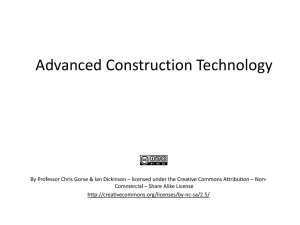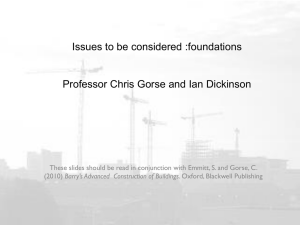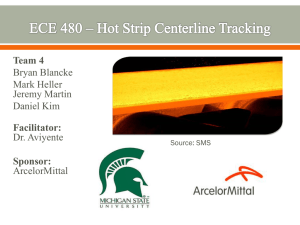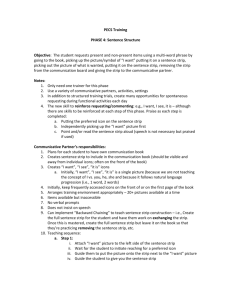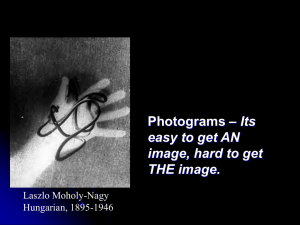Strip foundations
advertisement
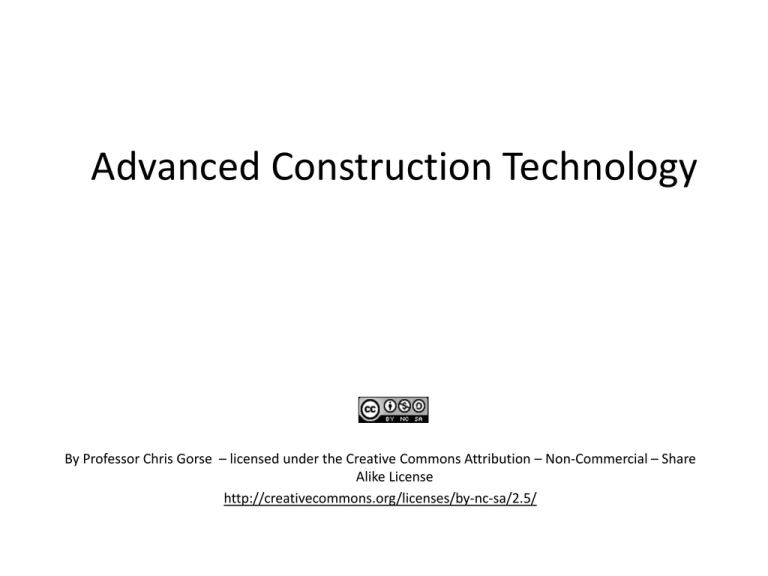
Advanced Construction Technology By Professor Chris Gorse – licensed under the Creative Commons Attribution – Non-Commercial – Share Alike License http://creativecommons.org/licenses/by-nc-sa/2.5/ Strip foundations These slides should be read in conjunction with Emmitt, S. and Gorse, C. (2010) Barry’s Advanced Construction of Buildings. Oxford, Blackwell Publishing Trench or strip foundations Trench or Strip a. Strip foundations. These are used to transfer long continuous loads (such as walls). The width and depth of the foundation will depend on the nature of ground and building loads. Strip foundation Strip foundations are suitable for continuous loads – long loads such as walls For cavity wall construction, the building loads are transferred down the inner skin of the cavity. The cavity ties the inner wall to the external skin providing additional stability Strip foundations, at a shallow depth, are suitable for good load bearing strata where the moisture content of the soil is stable. Ensure that trees are not planted close to shallow foundations as they will reduce moisture content in the soil causing clays to contract and the foundation to settle as the soil shrinks Strip foundations Strip foundation with internal walls and inner leaf of cavity wall constructed. Deep strip Strip foundation are suitable for continuous loads carried through walls Deep strip foundations are used to penetrate weak upper layer of subsoil or clay soils that are susceptible to expansion and contraction due to changes in moisture content. The foundation rests on the stable load bearing strata If expansion of clay is expected compressible sheeting is used to stop clay soils exerting lateral pressure on the deep foundation Foundation depth is increased taking the base of the foundation to a stronger load bearing strata or to a depth where the moisture content of the ground is unaffected by seasonal variation Reinforced wide strip foundation The tensile reinforcement that is cast within the concrete base allows the width of the foundation to be increased and the loads to be distributed over a greater area Load are distributed over a greater area reducing the load per unit area Steel reinforcement is placed in the bottom of the foundation where tensile forces are experienced





